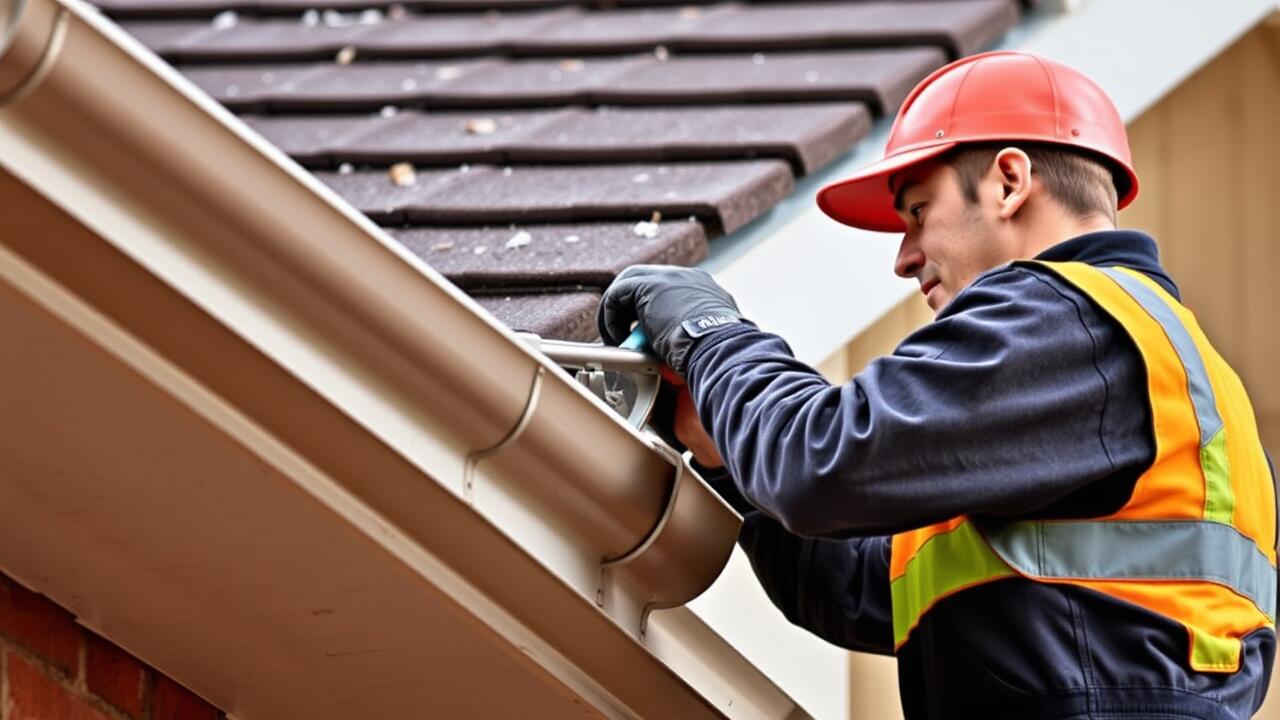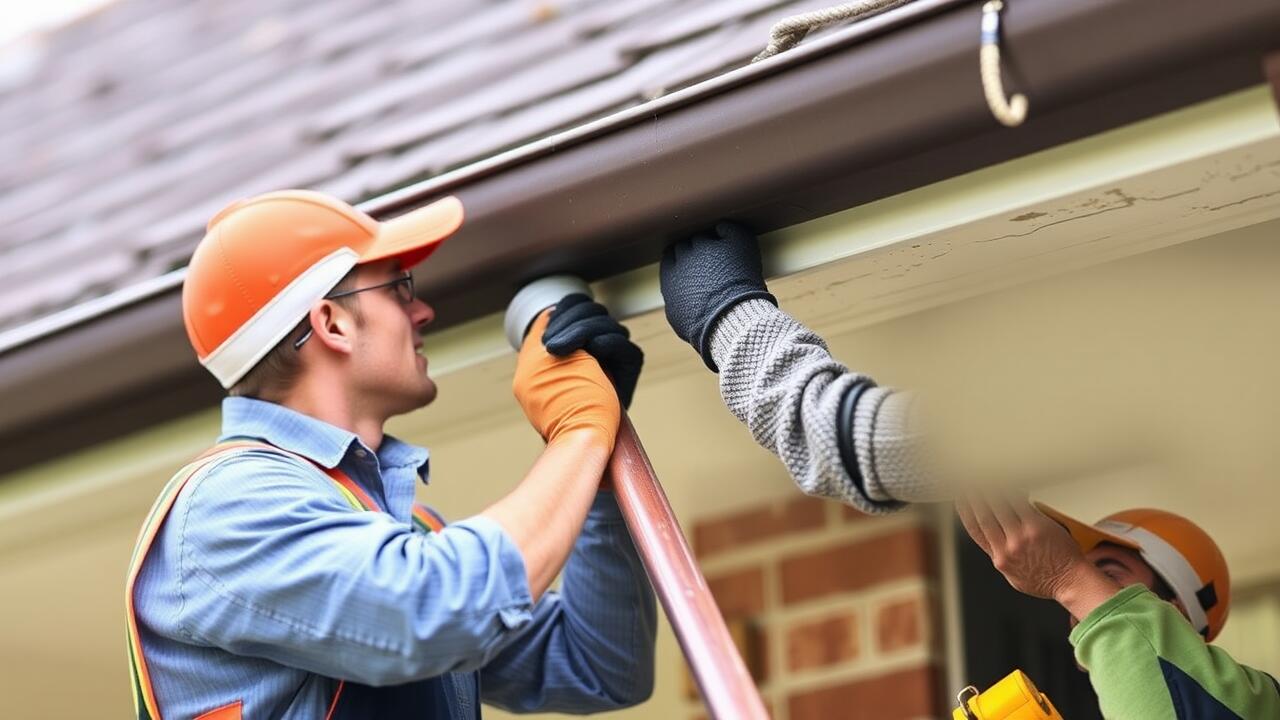
Estimating Gutter Material
When estimating gutter material, it is essential to consider the various types available in the market. Common options include aluminum, vinyl, copper, and steel. Each material has its unique advantages and price points, affecting both initial costs and long-term maintenance. For instance, aluminum is lightweight and resistant to rust, making it a popular choice. Copper, while aesthetically appealing, tends to be pricier and can require more care to maintain its appearance. Understanding these attributes can help homeowners make informed decisions based on their budget and preferences.
Choosing the right material also involves evaluating factors such as climatic conditions and the architectural style of the home. Residents in areas like Queen Anne, Seattle, may find that certain materials perform better against the region’s rainfall. Additionally, considering the durability and lifespan of each type of gutter is crucial for long-term satisfaction. A professional consultation can provide further insights tailored to the specific requirements of your home, ensuring that decisions align with both functionality and aesthetics.
Comparing Different Gutter Materials
When comparing different gutter materials, it is important to consider factors such as durability, cost, and aesthetics. Aluminum gutters are lightweight and rust-resistant, making them a popular choice for many homeowners. Copper gutters, while more expensive, offer a distinctive look and can last for decades with proper maintenance. Vinyl gutters are budget-friendly and easy to install; however, they may not hold up as well in extreme temperatures. Each material presents its unique benefits and drawbacks, influencing a homeowner's decision.
In Queen Anne, Seattle, the local climate may also play a significant role in determining the best gutter material. With frequent rainfall, homeowners may prioritize materials that handle water flow efficiently and resist corrosion. Additionally, factors such as neighborhood aesthetics and home styles can affect the choice of gutters. For those considering gutter installation in this area, understanding the various options available can lead to a more informed decision that aligns with both functional needs and visual appeal.
Assessing Gutter Capacity
Assessing gutter capacity involves understanding the volume of water your gutters need to handle during heavy rainfall. Factors such as roof size, pitch, and local climate play significant roles in determining the appropriate capacity. For example, a larger roof surface area will generate more runoff, requiring a gutter system designed to accommodate increased flow. Calculating the expected rainfall intensity for your area helps ensure gutters can effectively manage the water runoff without overflowing.
When planning for gutter installation, it's also essential to consider the types of gutters and downspouts that will be used. Different materials can affect performance, as can the size of downspouts installed. A professional option like Gutter Installation Greenwood, Seattle provides expertise in choosing the right combination for your specific needs. Properly sized gutters and downspouts reduce the risk of clogs and overflow, maintaining the integrity of both the roof and the home’s foundation.
Determining the Right Size for Your Home
Choosing the correct gutter size for your home is essential for effective water drainage and prevention of potential damage. The size of gutters typically varies based on the roof's pitch, the amount of rainfall in your area, and the overall size of your home. For residential properties, standard sizes are usually five or six inches wide. However, homes with larger roofs may require larger gutters to handle excessive water runoff.
When considering Gutter Installation Greenwood, Seattle, it's important to take into account your local climate and historical rainfall data. A home in a region with heavy rainfall may benefit from wider gutters to ensure optimal performance. Consulting with local experts can help determine the most suitable size for your specific circumstances, ensuring a balance between aesthetics and functionality.
Evaluating Installation Factors
When undertaking gutter installation, various factors can influence the efficiency and effectiveness of the system. The slope of the roof plays a significant role in determining how well water can flow into the gutters. A proper pitch ensures that water drains efficiently, preventing overflow during heavy rains. Additionally, the location of downspouts must be carefully planned. Placing them too close together can lead to inadequate drainage, while spacing them too far apart might result in water pooling in certain areas.
Environmental conditions are another critical consideration for gutter installation. In areas like Queen Anne, Seattle, where rainfall can be frequent and heavy, choosing a robust gutter system is essential. Local building codes may also dictate specific requirements for gutter installation, ensuring that the system can effectively handle the typical weather conditions in the region. Evaluating these factors will aid in selecting the right materials and configurations, ultimately leading to a more reliable gutter system.
Considerations for Gutter Placement
Proper gutter placement is critical for effective water management around your home. The location should allow for optimal drainage, directing water away from the foundation to prevent issues such as erosion or flooding. When planning the installation, consider the roofline's pitch and any potential obstructions, like trees or overhangs, that may impact water flow. Ensuring gutters are installed with the right slope, typically around 1 inch for every 10 feet, helps facilitate efficient drainage and minimizes standing water.
When selecting a gutter installation professional, factors such as local climate and average rainfall should be evaluated. In areas like Queen Anne, Seattle, where rain is common, it's essential to choose gutters that can handle substantial water volume. Moreover, the integration of downspouts should be positioned strategically to disperse water effectively without pooling. Hiring a knowledgeable service for gutter installation in Queen Anne, Seattle ensures that these considerations are handled, enhancing the longevity and functionality of your gutter system.
FAQS
What factors should I consider when estimating gutter material?
When estimating gutter material, consider the type of material you want to use (such as aluminum, copper, or vinyl), the length of the gutters needed, and any additional components like downspouts or brackets.
How do I compare different gutter materials?
To compare different gutter materials, evaluate their durability, maintenance requirements, cost, and aesthetic appeal. Each material has its pros and cons based on climate and personal preferences.
How can I assess gutter capacity for my home?
To assess gutter capacity, calculate the expected rainfall in your area and determine the square footage of your roof. This will help you estimate the amount of water your gutters need to handle during heavy rains.
What size gutters should I install for my home?
The right size gutters depend on your roof area and the intensity of rainfall in your region. Generally, 5-inch gutters are suitable for average rainfall, while 6-inch gutters may be necessary for areas with heavy rainfall.
What installation factors should I evaluate for gutter placement?
When evaluating installation factors for gutter placement, consider the roof pitch, location of downspouts, potential obstructions like trees, and the overall drainage system of your home to ensure optimal water flow.



